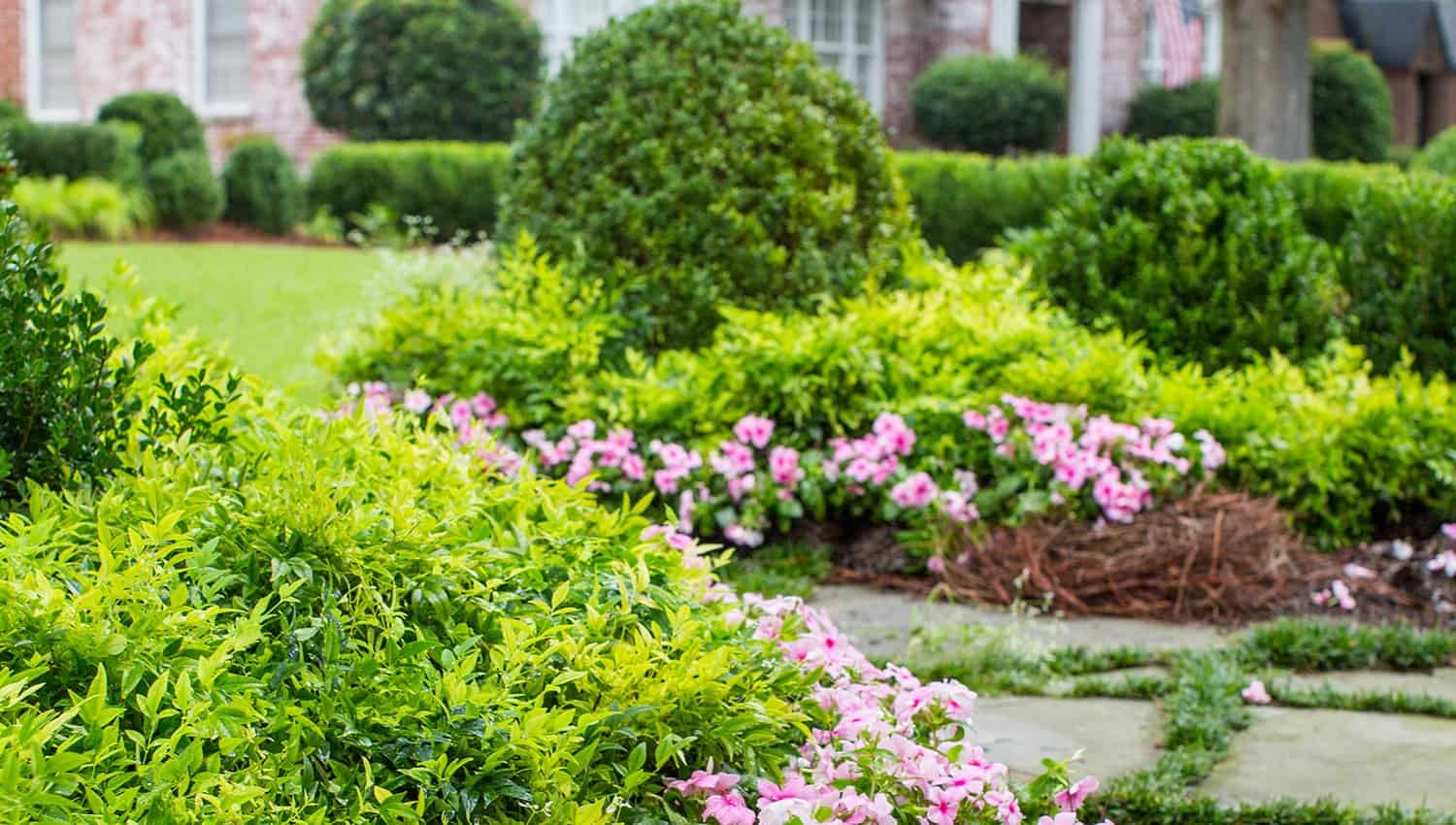Nandina has long been a mainstay in Southern landscapes, and for good reason. A remarkably adaptable plant, Nandina effortlessly transitions from sun to shade, moist to dry soils, and modern to traditional garden designs. This tough plant needs little pampering and performs beautifully in our hottest and coldest weather. No wonder nandina established such a foothold in the gardens of our parents and grandparents.
From beloved to loathed, nandina is also a plant that invites strong reactions. With modern improved nandina cultivars, we can cherish what is best about nandina, while leaving behind aspects that draw complaints. Along the way, we can change the rules as to how, and where, nandina is used in the garden. Join us!

1. Layers: Old and New
Nandina is the perfect plant for creating dynamic layers in the landscape. The plant itself has a unique growth habit of vertically layered branches, which is most pronounced in taller varieties. Combine nandina with other evergreen species in varying heights to create lush, colorful planting beds.
While old-fashioned nandinas serve beautifully as a backdrop, newer compact varieties such as ‘Lemon Lime’ and Flirt™ add texture and color to the mid ground. Accentuate the foliage color by planting against a dark green backdrop, like the more formal boxwood in this front yard garden plan. Finish the design with flowering perennials.
2. Plant Containers That Last
Compact cultivars allow nandinas to go where old-fashioned varieties could not – into containers. For stunning bright plantings, combine reliable but beautiful nandina with vibrant tropical foliage and flowering annuals or perennials. With an evergreen nandina centerpiece, nandina containers may be modified for a simple transition from one season to the next. Check out our nandina container recipes here.
This evergreen container garden planting showcases nandina, complemented by hardy shrubs such as Purple Pixie® Loropetalum and ‘Soft Caress’ Mahonia. Lasting beyond spring, the plant combo offers yellow winter blooms from the mahonia, while ‘Lemon Lime’ Nandina and ‘Everillo’ Carex brighten shady spaces with year-round lemon-lime hues.

3. Provide Textural Contrast
Foliage texture of nandinas varies among cultivars from fine to medium. Texture provides the biggest payoff from a design standpoint when used to create contrast. Combine opposing textures for visual impact. In this fall container, the round purple leaves of Purple Pixie Dwarf Weeping Loropetalum and the thin elegant blades of the fountain grass or pennisetum offer sharp contrast to the fine-textured ‘Lemon Lime’ Nandina.

4. Soften Hardscape
Whether a fence corner or the edge of a patio, the fine texture of nandina works in the landscape to soften the edges of landscape hardscapes. Hide hard, straight lines with waves of nandina, or plant en masse below fountains and statuary to create a soft bed. Nandina also works well among stonework, masonry and wooden structures. Select a cultivar that will provide both color and textural contrast.
5. Create Winning Color Combinations
When it comes to color, nandina offers numerous vibrant combinations. The subtle pink and red tints may be used to provide contrast or accentuate bolder hues.
For maximum color contrast, pair red-hued nandina varieties with deep green foliage and use yellow as an accent color, or combine plants with blooms and foliage in primary colors like red and blue.
‘Lemon Lime’ Nandina’s chartreuse foliage will contrast most sharply against purple, such as that of loropetalum varieties, or blend beautifully with other greens for a soothing plant combo. For another serene effect, use an analogous color scheme by combining hues that are adjacent on the color wheel. Analogous designs will create harmony throughout the landscape.













